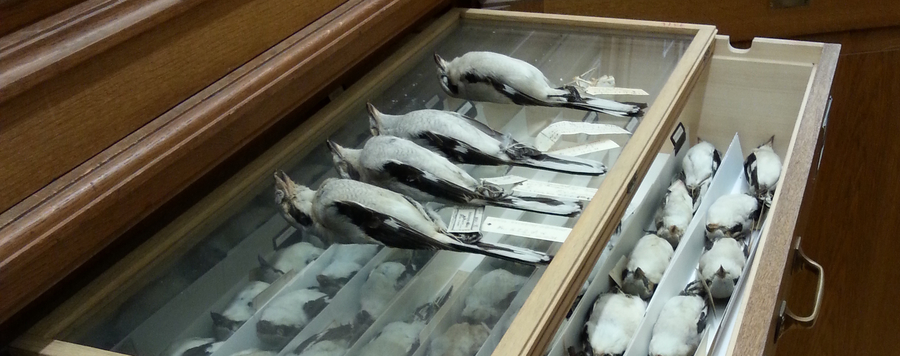
Ornithology
The majority of the ornithological collection consists of dry-preserved specimens. Currently, there are about 76,000 study skins, 9,000 mounted specimens, 8,000 skeletons, 14,000 feather specimens as well as Germany’s largest egg collection which includes about 60,000 eggs and clutches. An additional 1,700 bird nests plus a few hundred alcohol specimens are also part of the collection. Cross-referenced sub-samples of organ or tissue material are maintained in the museum’s biobank. The type specimens in the ornithological collection represent 322 scientific bird names.
The geographical foci of the collection are the Palaearctic, the Afrotropic and the Neotropic. Taxonomically, finches (Fringillidae), weavers (Ploceidae) and hummingbirds (Trochilidae) are very well-represented. Of particular importance are local series of North Atlantic seabirds and of raptors and songbirds from Central Germany dating from the early 20th century (Coll. A. Koenig and Coll. O. Kleinschmidt, resp.), as well as songbirds collected during the first half of the 19th century (Coll. C.L. Brehm).






